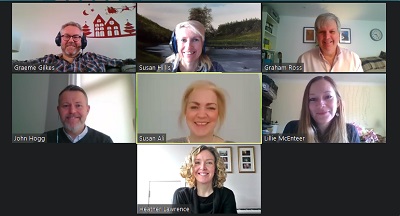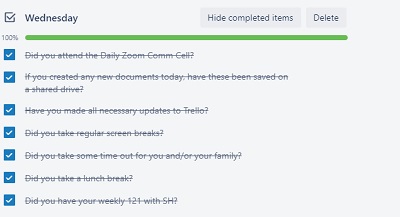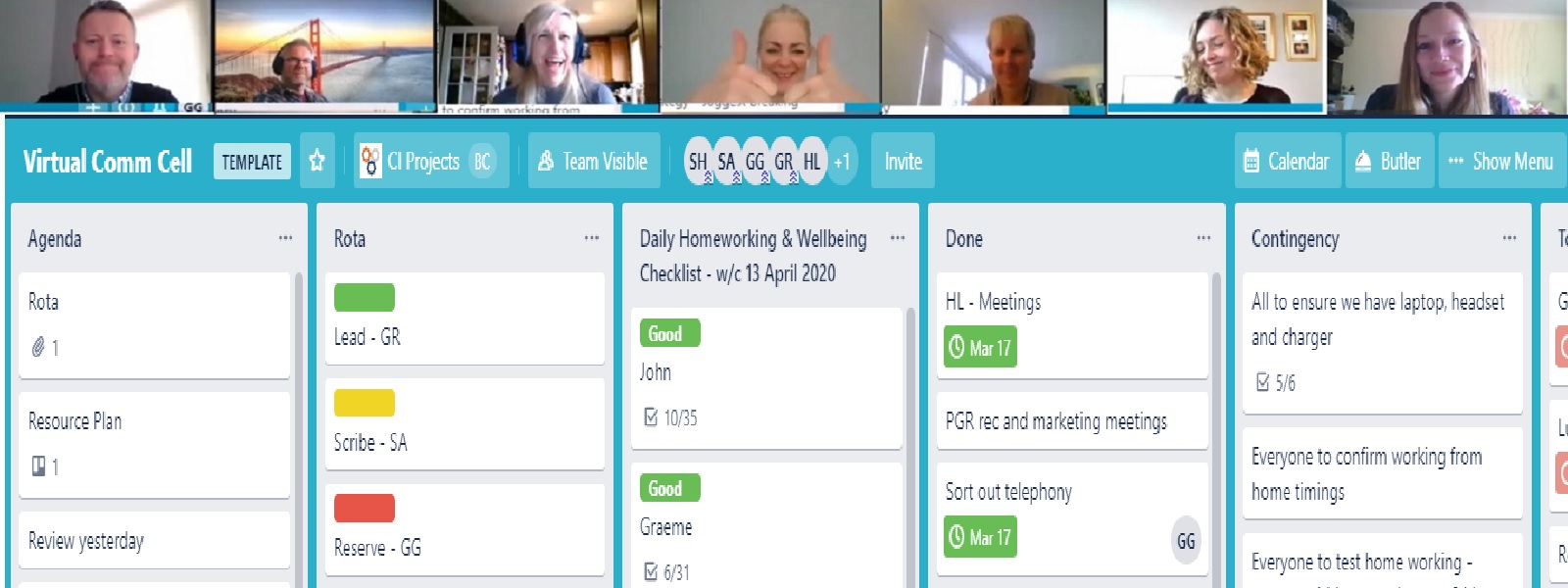Over the last few weeks my colleagues in the Continuous Improvement Directorate have been sharing their personal experiences of remote working during the coronavirus crisis. You can read them here:
- People who need people by Susan Hillis
- Don't sit near the fridge by Graeme Gilkes
- Working from home by Susan Ali
- The show must go on by Graham Ross
Yes, for those of you who are not familiar with our Continuous Improvement Directorate, it helps if you are called either Graham (doesn’t matter how you spell it) or Susan!
This blog is my personal perspective on remote working, including how it has changed my role as a leader working remotely. But before that, here’s a bit of context.
I have been responsible for leading the Continuous Improvement programme in the University of Strathclyde since May 2013. During this period, I have strived to create a culture where the team, both collectively and individually, feel empowered to make changes, to improve how we do things and solve problems. Why is this relevant and important?
Before the coronavirus crisis escalated in the UK, I was on a business trip to Canada. On my return from Canada the UK had changed; we were moving towards what would become known as a “Lockdown”. I returned from Canada on the day the University of Strathclyde was transitioning towards home working for the majority of staff. In the run up to this happening my colleagues in the CI Directorate had already been making plans and putting measures in place to ensure that we could all work remotely in an effective manner. Whilst I was in regular contact with them, they were the ones coming up with the plans and carrying out the actions. I knew that we would be in a good place to deal with this.
The team had created a Virtual Daily Stand-Up on Trello (supported by Zoom) and made sure that everyone had the necessary equipment from home to be able to work remotely. Plans were also in place to enable us to run workshops remotely, again using a combination of Zoom and Trello. All of this enabled us to ‘hit the ground running’ and also helped us to retain much of the structure and discipline that we had when we were working on campus, which I believe has been helpful for us as a team as we made the transition to working remotely.
Leading a Team Remotely
Before sharing my own experience it’s important to stress how supportive my University has been to all its students and staff throughout this challenging and uncertain period for us all. Very much living one of its Values of being People-Oriented. In my opinion it’s also important for every leader to demonstrate such an approach. Throughout my recent experience of working remotely, my primary focus has been on the continued wellbeing of the team. That’s not to say it’s not important when we are all working on campus, far from it, however, it takes on a different perspective when you are all working remotely in what I described above as being challenging and uncertain times.
 Every person has different circumstances and it’s important as a leader that you recognise this. You also need to let everyone in your team know that you recognise it. For example, someone who is caring for young children and trying to juggle work, is in a very different position to someone who lives on their own or has grown up children. Therefore, it’s important that you try to reassure everyone in the team, as well as discussing and agreeing what the expectations are for each individual within the team.
Every person has different circumstances and it’s important as a leader that you recognise this. You also need to let everyone in your team know that you recognise it. For example, someone who is caring for young children and trying to juggle work, is in a very different position to someone who lives on their own or has grown up children. Therefore, it’s important that you try to reassure everyone in the team, as well as discussing and agreeing what the expectations are for each individual within the team.
As part of this I have increased the number of one to ones I have with every member of the team and changed their format to have more of a general conversation about how things are going from both a personal and work perspective. We also start each day in our virtual Daily Stand-Up with a reflection of how the previous day was, how people are coping with everything that is going on.
During normal times (remember them?), in our office we apply 5S Workplace Organisation and as part of this we have daily, weekly, month and quarterly workplace assessment. In the current circumstances it’s not possible to carry this out in the same way. Therefore, I discussed an idea with the team to introduce a new kind of daily assessment using Trello. We have called this a “Daily Homeworking and Wellbeing Checklist” for every member of the team to complete before the end of every working day. The checklist includes the following questions:
- Did you attend the Zoom/Trello Daily Stand-Up?
- Did you take regular screen breaks throughout the day?
- Did you take some time out for you and/or your family? (this could be exercise, playing with kids etc.)
- Did you take a lunch break?
- If you created any new documents, have they been saved on a shared drive?
- Have you made all necessary updates to Trello?
 There is also a question to check whether one to ones have taken place when they were meant to. We talk about the checklist at our Daily Stand-Up each morning and discuss any issues that may have arisen.
There is also a question to check whether one to ones have taken place when they were meant to. We talk about the checklist at our Daily Stand-Up each morning and discuss any issues that may have arisen.
The introduction of this checklist is primarily to focus on the wellbeing of each member of the team; in addition, in my opinion, I believe that it also helps introduce further good standard disciplines and structures for the team to support each of us individually and collectively.
Having this discipline and structure in our work has, I believe, helped us adapt very quickly to the challenges of working remotely. We are developing new ways of working and new ways of delivering our workshops and training. We are also thinking about this period as being an opportunity to change how we work in a way that will be beneficial in the medium and long-term when things do go back to normal, or perhaps a new normal.
If you’d like to find out more about our approach to working remotely, please get in touch.


